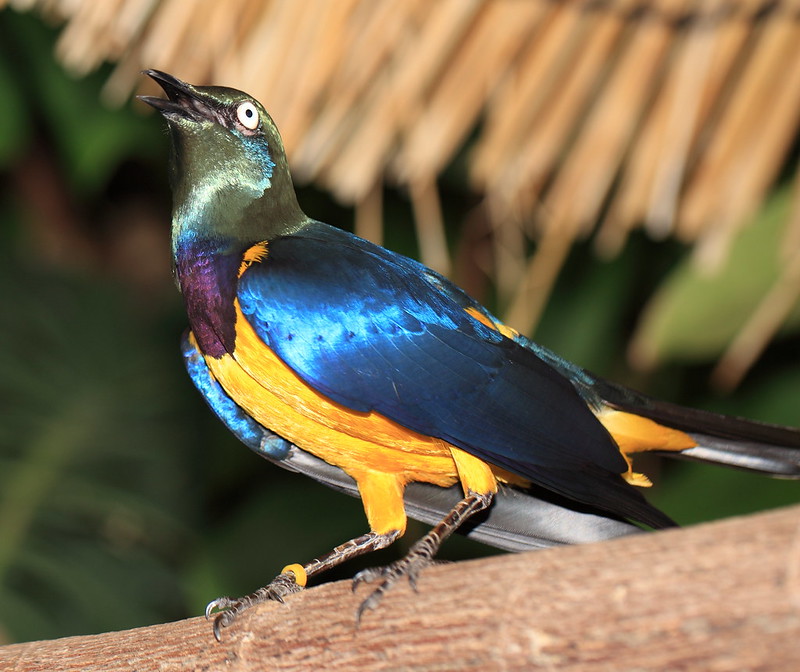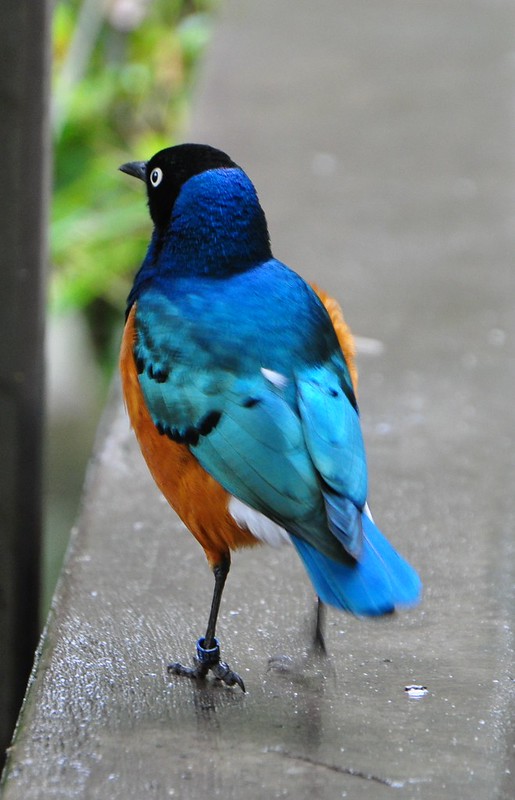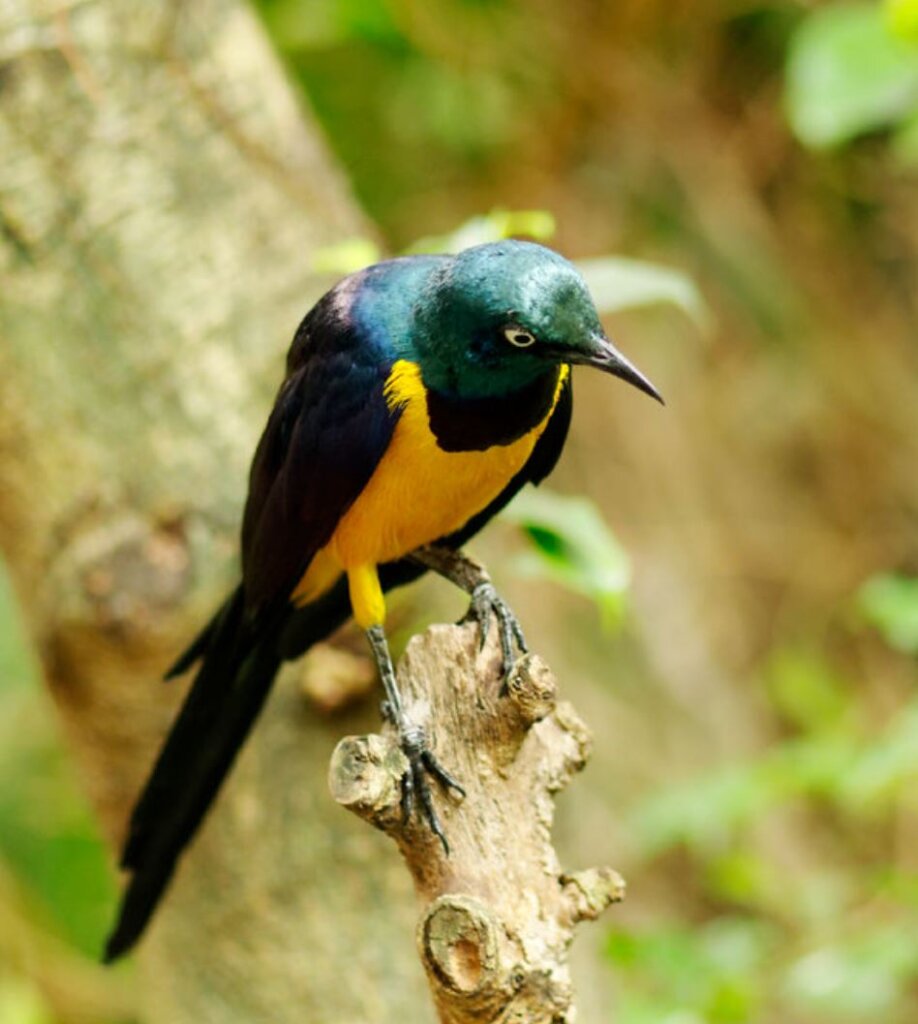Golden-breasted Starling: A Regal Avian Beauty Shining in Green, Yellow, and Ultraviolet Blue
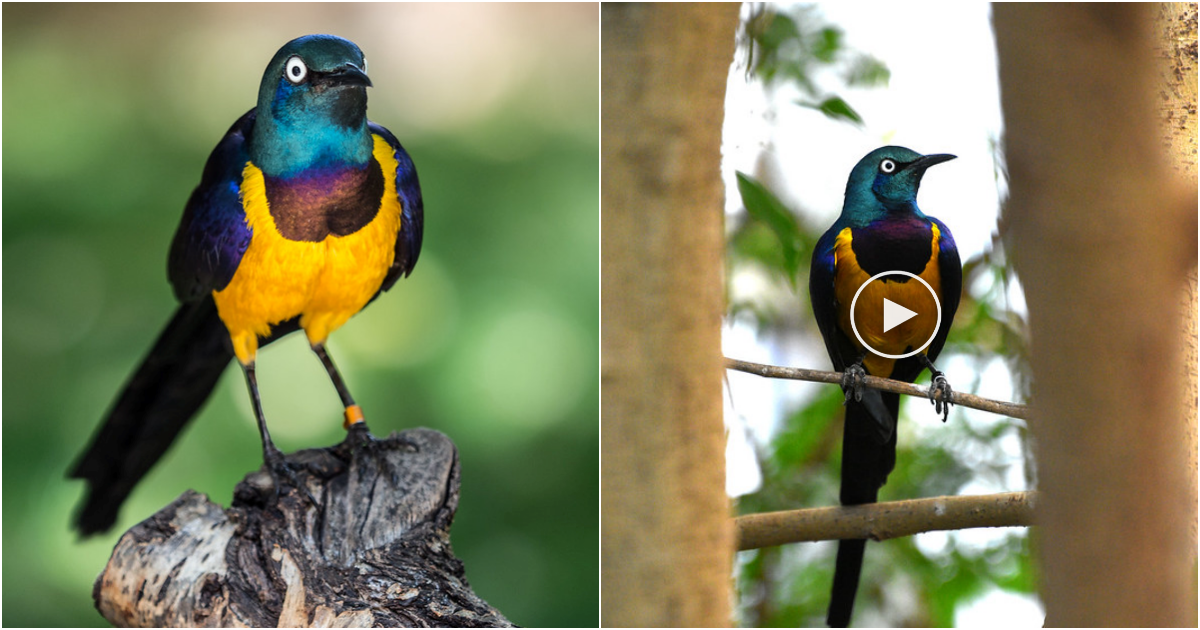
The Golden-breasted Starling, also known as the royal starling, is a visually stunning bird that captivates observers with its bold and vibrant colors. Its head and upper back display a metallic shade of green, while its breast and belly shimmer with a golden yellow hue. The wings, back, and neck are adorned with beautiful violet-blue feathers. Completing its majestic appearance are its dark bill, legs, and long tail feathers.
Both male and female Golden-breasted Starlings share a similar appearance, although juveniles may appear slightly duller. This avian royalty is truly a sight to behold, with its intricate blend of green, yellow, and ultraviolet blue.

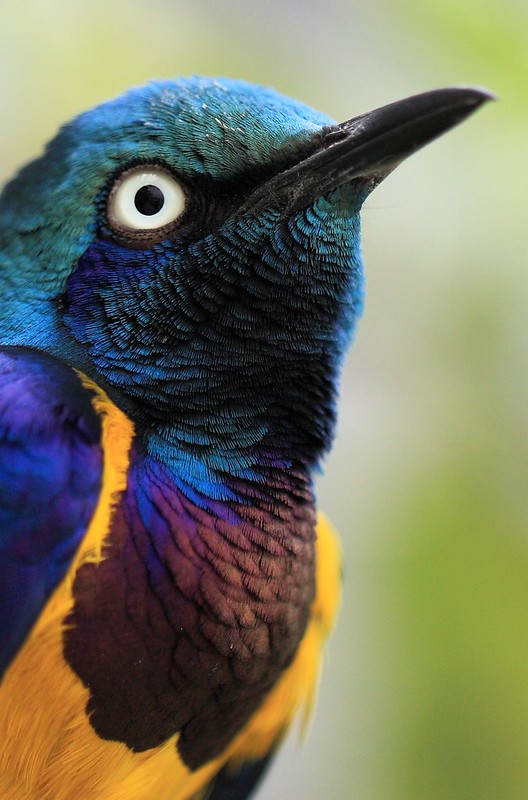 For nesting, Golden-breasted Starlings prefer tree holes, where they construct cup-shaped nests using leaves, roots, and other plant materials they gather. The female lays around 3-5 eggs and incubates them for approximately 11-14 days. Both parents participate in feeding the hatchlings, along with other members of the bird community. The chicks become fully fledged after about three weeks.
For nesting, Golden-breasted Starlings prefer tree holes, where they construct cup-shaped nests using leaves, roots, and other plant materials they gather. The female lays around 3-5 eggs and incubates them for approximately 11-14 days. Both parents participate in feeding the hatchlings, along with other members of the bird community. The chicks become fully fledged after about three weeks.  vThe Golden-breasted Starling has a wide breeding range that spans from Somalia and Ethiopia to Kenya and Tanzania. It is considered locally common and does not show any signs of population decline or significant threats.
vThe Golden-breasted Starling has a wide breeding range that spans from Somalia and Ethiopia to Kenya and Tanzania. It is considered locally common and does not show any signs of population decline or significant threats.  The Golden-breasted Starling stands out as a magnificent example of avian beauty, adorning the natural landscapes it inhabits with its splendid colors and graceful presence.
The Golden-breasted Starling stands out as a magnificent example of avian beauty, adorning the natural landscapes it inhabits with its splendid colors and graceful presence. 
